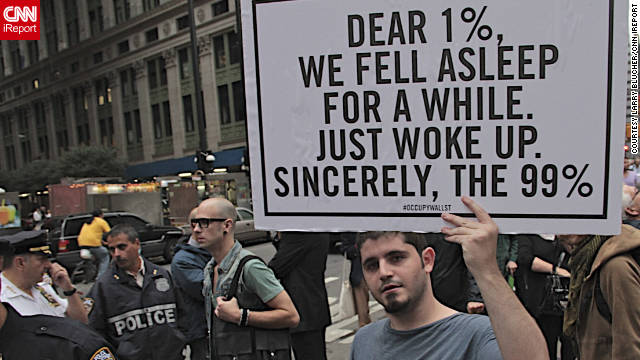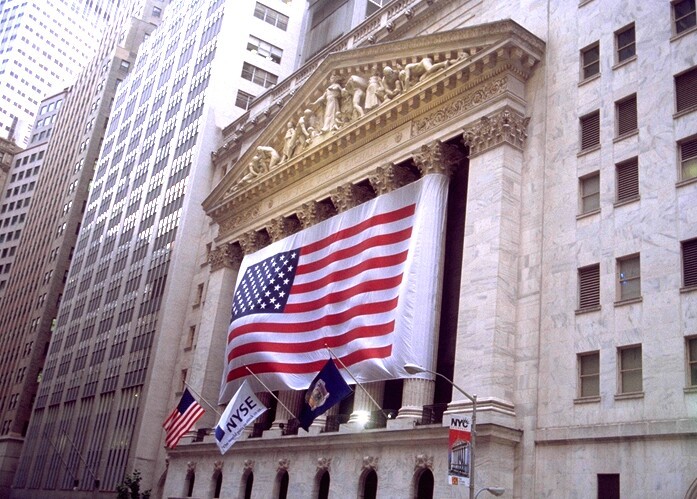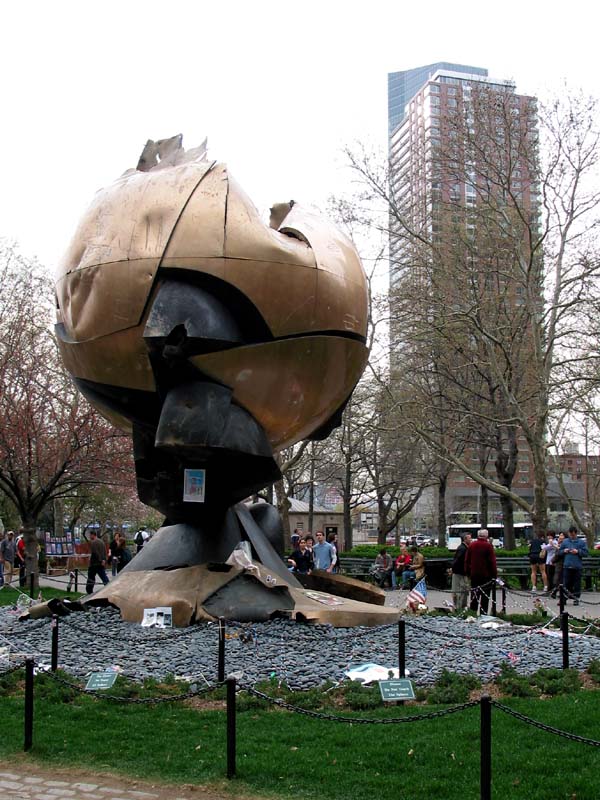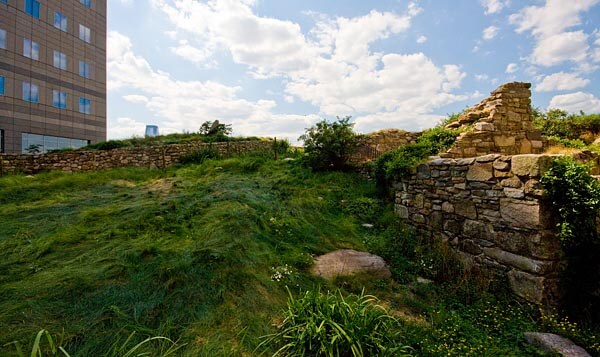 We took the E train to lower Manhattan and walked to where the World Trade Center towers once stood. Standing where the World Trade Center once now stood The Freedom Tower or One World Trade Center. In commemoration of that dreadful day on September 11, 2001, The Freedom Tower is a replacement of what was once New York's World Trade Center and it represents new growth. It is there to remember those who lost their lives and serve as a way to heal the scar on a nation. The new tower will pay homage to the twin towers by several ways in that the base of the Freedom
Tower will be 200 feet square just the same dimensions as the original
towers, the observation deck will be at 1,362 feet: the height of World
Trade Center Tower Two and the glass parapet will be at 1,368 feet: the
height of World Trade Center Tower One http://www.glasssteelandstone.com/BuildingDetail/439.php. The view of the building was beautiful and although a lot people ridicule this design and was not receptive of this recreation, the fact that the building is almost completed shows that this building is not about what people think, the meaning is much greater than that; it's there to represent us as a nation that stand as one no matter what the obstacles are and also to remember those who lost their lives and the families who have to suffer as a result of these losses. After taking in the beautiful view of the Freedom Tower, we walked to St. Paul's Chapel & Churchyard. The chapel is Manhattan's only remaining colonial church, built as a subsidiary chapel of Trinity Church for worshipers who lived too far uptown to make it down to Wall St. During the British occupation, St Paul's Chapel served British officers as their house of worship. It was also used by George Washington following his inauguration as Federal Hall ( BG,p.77). From the outside, i could see tombstones outside with flags honoring some of those who died during 9/11. After the World Trade Center disaster, the chapel served as both a place of refuge for workers at Ground Zero and as a temporary memorial for visitors, who attached messages and memorials to the fence in front of the church ( BG,p.77). The outside of the church looks nothing like the inside; when i entered the church, i was amazed of how beautiful it looked. The interior is painted in pale colors graced by slender Corinthian columns supporting a barrel- vaulted ceiling. The Palladian window glazed with clear glass on the chancel wall and the 14 Waterford crystal chandeliers which survived the shock waves of the collapsing Twin Towers (BG, p.78). As i walk around the church, i could feel the emotions from those who were there visiting; everyone walked around quietly and just stayed in silence as if this tragedy just happened yesterday. I got to read some of the stories and letters the families sent trying to find either their daughters, husbands, wives,and friends. Although reading the stories were sad, the fact that these stories were there shows that although people lost their lives, they will never be forgotten. Another thing that struck me was seeing pictures of people who came and volunteered their time to those in need. Everyone from nurses, chiropractors,doctors,ect came to offer their time and provide as much as they can. I found that beautiful because it shows that even though there is evil in the world, somewhere out there are angels waiting to rescue those in need.
We took the E train to lower Manhattan and walked to where the World Trade Center towers once stood. Standing where the World Trade Center once now stood The Freedom Tower or One World Trade Center. In commemoration of that dreadful day on September 11, 2001, The Freedom Tower is a replacement of what was once New York's World Trade Center and it represents new growth. It is there to remember those who lost their lives and serve as a way to heal the scar on a nation. The new tower will pay homage to the twin towers by several ways in that the base of the Freedom
Tower will be 200 feet square just the same dimensions as the original
towers, the observation deck will be at 1,362 feet: the height of World
Trade Center Tower Two and the glass parapet will be at 1,368 feet: the
height of World Trade Center Tower One http://www.glasssteelandstone.com/BuildingDetail/439.php. The view of the building was beautiful and although a lot people ridicule this design and was not receptive of this recreation, the fact that the building is almost completed shows that this building is not about what people think, the meaning is much greater than that; it's there to represent us as a nation that stand as one no matter what the obstacles are and also to remember those who lost their lives and the families who have to suffer as a result of these losses. After taking in the beautiful view of the Freedom Tower, we walked to St. Paul's Chapel & Churchyard. The chapel is Manhattan's only remaining colonial church, built as a subsidiary chapel of Trinity Church for worshipers who lived too far uptown to make it down to Wall St. During the British occupation, St Paul's Chapel served British officers as their house of worship. It was also used by George Washington following his inauguration as Federal Hall ( BG,p.77). From the outside, i could see tombstones outside with flags honoring some of those who died during 9/11. After the World Trade Center disaster, the chapel served as both a place of refuge for workers at Ground Zero and as a temporary memorial for visitors, who attached messages and memorials to the fence in front of the church ( BG,p.77). The outside of the church looks nothing like the inside; when i entered the church, i was amazed of how beautiful it looked. The interior is painted in pale colors graced by slender Corinthian columns supporting a barrel- vaulted ceiling. The Palladian window glazed with clear glass on the chancel wall and the 14 Waterford crystal chandeliers which survived the shock waves of the collapsing Twin Towers (BG, p.78). As i walk around the church, i could feel the emotions from those who were there visiting; everyone walked around quietly and just stayed in silence as if this tragedy just happened yesterday. I got to read some of the stories and letters the families sent trying to find either their daughters, husbands, wives,and friends. Although reading the stories were sad, the fact that these stories were there shows that although people lost their lives, they will never be forgotten. Another thing that struck me was seeing pictures of people who came and volunteered their time to those in need. Everyone from nurses, chiropractors,doctors,ect came to offer their time and provide as much as they can. I found that beautiful because it shows that even though there is evil in the world, somewhere out there are angels waiting to rescue those in need.




 Walking down Wall Street, we saw where Occupy Wall Street took place last year on September 17,2011. It was held by people who categorized themselves as " the 99%" who will no longer tolerate the greed and corruption of the 1% http://occupywallst.org/ . I saw a few people outside in their sleeping bags and i just thought that they were crazy to be laying outside in the cold. Continuing down Wall Street, we walk by the New York Stock Exchange. Ever since the New York Stock Exchange moved to Wall Street in 1903, it has been synonymous with New York's financial industry (BG,p.64). It is the world's largest exchange in terms of dollar value making New York a preeminent city of the capitalist world ( BG,p.68). I always hear talks about Wall Street and New York Stock Exchange in the news but never knew seen it or knew what it looked like. Next we got to inside Federal Hall National Memorial, one of New York's most important historic sites. In the early 18th century the British City Hall stood on this site. There John Peter Zenger, the confrontational publisher of the New York Weekly Journal was tried in 1735 for libeling the royal governor. His acquittal set forth a precedent for freedom of the press that would later be reaffirmed in the Bill of Rights. George Washington took the oath of office in 1789 as first president of the United States (BG,p.69). Mike allowed us to go inside and we saw some of the things that were used by the previous presidents. I also saw pictures from Obama's campaign 4 years ago where he was interacting with the public and some people were hugging him and touching his head. I appreciated that part because it shows that he is human like everyone else and that the people appreciated his eagerness and courage to be the first African American to run for President. From there we walked a short distance to Trinity Church where we briefly looked inside. The church stands 79ft wide and 166ft long;its tower including the spire stands 281ft above the ground. For many years, it was the highest point in Lower Manhattan. Trinity was one of the first Gothic Revival churches in the nation as well as the first Gothic Revival church in the city (BG,p.65.
Walking down Wall Street, we saw where Occupy Wall Street took place last year on September 17,2011. It was held by people who categorized themselves as " the 99%" who will no longer tolerate the greed and corruption of the 1% http://occupywallst.org/ . I saw a few people outside in their sleeping bags and i just thought that they were crazy to be laying outside in the cold. Continuing down Wall Street, we walk by the New York Stock Exchange. Ever since the New York Stock Exchange moved to Wall Street in 1903, it has been synonymous with New York's financial industry (BG,p.64). It is the world's largest exchange in terms of dollar value making New York a preeminent city of the capitalist world ( BG,p.68). I always hear talks about Wall Street and New York Stock Exchange in the news but never knew seen it or knew what it looked like. Next we got to inside Federal Hall National Memorial, one of New York's most important historic sites. In the early 18th century the British City Hall stood on this site. There John Peter Zenger, the confrontational publisher of the New York Weekly Journal was tried in 1735 for libeling the royal governor. His acquittal set forth a precedent for freedom of the press that would later be reaffirmed in the Bill of Rights. George Washington took the oath of office in 1789 as first president of the United States (BG,p.69). Mike allowed us to go inside and we saw some of the things that were used by the previous presidents. I also saw pictures from Obama's campaign 4 years ago where he was interacting with the public and some people were hugging him and touching his head. I appreciated that part because it shows that he is human like everyone else and that the people appreciated his eagerness and courage to be the first African American to run for President. From there we walked a short distance to Trinity Church where we briefly looked inside. The church stands 79ft wide and 166ft long;its tower including the spire stands 281ft above the ground. For many years, it was the highest point in Lower Manhattan. Trinity was one of the first Gothic Revival churches in the nation as well as the first Gothic Revival church in the city (BG,p.65. We then strolled down Broadway to the Museum of the American Indian, which housed the historic Alexander Hamilton Custom House. The museum was born from the obsession of George Gustav Heye, who gathered most of its collection. He took a job in Arizona as an electrical engineer and soon began collecting Native American artifacts. The museum today reflect attitudes toward Native American cultures and art that have evolved since Heye died (BG,p.44). Since we did not get to go inside the museum, we made our way to Battery Park where Mike and Meritta give us some background about the park. The name came from a row of cannons that defended the original fort. Inside the park stood a sphere originally dedicated in 1971 moved there from the World Trade Center, where it was battered and buried by debris from the falling towers on 9/11. The sphere was conceived by Koenig as a memorial to world peace through trade and it now symbolizes those who died on 9/11( BG,p.47). As we walking through the park, we could see delightful
views of the Statue of Liberty and Ellis Island. I was a little happy that this was not part of the class because it seemed to have gotten colder by walking along the water itself.
We then strolled down Broadway to the Museum of the American Indian, which housed the historic Alexander Hamilton Custom House. The museum was born from the obsession of George Gustav Heye, who gathered most of its collection. He took a job in Arizona as an electrical engineer and soon began collecting Native American artifacts. The museum today reflect attitudes toward Native American cultures and art that have evolved since Heye died (BG,p.44). Since we did not get to go inside the museum, we made our way to Battery Park where Mike and Meritta give us some background about the park. The name came from a row of cannons that defended the original fort. Inside the park stood a sphere originally dedicated in 1971 moved there from the World Trade Center, where it was battered and buried by debris from the falling towers on 9/11. The sphere was conceived by Koenig as a memorial to world peace through trade and it now symbolizes those who died on 9/11( BG,p.47). As we walking through the park, we could see delightful
views of the Statue of Liberty and Ellis Island. I was a little happy that this was not part of the class because it seemed to have gotten colder by walking along the water itself.  Our journey north took us along the Esplanade stopping to visit
the World Financial Center and the Irish Hunger Memorial. The Irish Hunger Memorial was created by Brian Tolle and Gail Wittwer-Laird as a way to raise public awareness of the events that led to the "Great Irish
Famine and Migration" of 1845-1852. It serves as a reminder to millions
of New Yorkers and Americans who proudly trace their heritage to
Ireland, of those who were forced to emigrate during one of the most
heartbreaking tragedies in the history of the world http://www.nyc.com/arts__attractions/irish_hunger_memorial.1379/editorial_review.aspx. We then stopped to visit the World Financial Center, whose five towers were designed by Cesar Pelli between 1985 and 1988. The 120 ft glass domed atrium, the marble floor and the aerial bridge was damaged by debris from the fall of the Twin Towers. The atrium served as an escape route for thousands of workers in the towers who fled west toward the river ( BG, p.61). We stopped at the Poets House around 1:30; it is a national poetry library where people can come and read poems or have their books publish there if there are poets themselves.It contains more than 50,000 volumes of poetry. It was founded in
1985 by Stanley Kunitz and Elizabeth Kray. Mike let us have some down time to go around the library and pick out a book that stood out to us. I picked up a book called fantasy and i find a few lines from there that i found interesting " They say merely to see is to become the thing. Though our fingers clutch, the movement's not necessary. Becoming what we crave. We suffer craving".
Our journey north took us along the Esplanade stopping to visit
the World Financial Center and the Irish Hunger Memorial. The Irish Hunger Memorial was created by Brian Tolle and Gail Wittwer-Laird as a way to raise public awareness of the events that led to the "Great Irish
Famine and Migration" of 1845-1852. It serves as a reminder to millions
of New Yorkers and Americans who proudly trace their heritage to
Ireland, of those who were forced to emigrate during one of the most
heartbreaking tragedies in the history of the world http://www.nyc.com/arts__attractions/irish_hunger_memorial.1379/editorial_review.aspx. We then stopped to visit the World Financial Center, whose five towers were designed by Cesar Pelli between 1985 and 1988. The 120 ft glass domed atrium, the marble floor and the aerial bridge was damaged by debris from the fall of the Twin Towers. The atrium served as an escape route for thousands of workers in the towers who fled west toward the river ( BG, p.61). We stopped at the Poets House around 1:30; it is a national poetry library where people can come and read poems or have their books publish there if there are poets themselves.It contains more than 50,000 volumes of poetry. It was founded in
1985 by Stanley Kunitz and Elizabeth Kray. Mike let us have some down time to go around the library and pick out a book that stood out to us. I picked up a book called fantasy and i find a few lines from there that i found interesting " They say merely to see is to become the thing. Though our fingers clutch, the movement's not necessary. Becoming what we crave. We suffer craving".Thanks to Meritta for being thoughtful, she convinced Mike to let us take the train to the Meat Packing District instead of walking in the horrific cold. The Meatpacking District was formerly known as the Gansevoort Market. Although the wholesale meatpacking industry remains and still gives the neighborhood its workings class edge, it gentrified rapidly during the 1990s with stylish bars and restaurants, clothing and design stores and art galleries ( BG,p.184). We stopped at Chelsea Market where me and a couple of my classmates stopped for a delicious bite of Cheeseburger Deluxe. I ate all of my sandwich along with the fries that came with it; i enjoyed it!. From Chelsea Market, we hopped onto the High Line. The High Line was constructed in the 1930s to solve the problems along where the New York Central Railroad used to run. The streets were clogged with traffic, the trains were dirty, and the tracks were dangerous. West Side Cowboys used to horseback to tell people when the trains were coming but a lot of accidents happened as a result (BG,p.188). We took the High Line to 20th Street , where we descend into the heart of Chelsea's art gallery scene. Chelsea has undergone rapid changes in the past decade making it one of the most exclusive areas in the city. Chelsea is home to hundreds of art galleries and boy did Mike make us see the art. We went to maybe 5 art galleries and not one of them had my interest. One art gallery we went to had a big black thing what resembled a table and a painting on the wall. Those were the only two " art pieces" there. I couldn't believe it. We then went to another gallery where there was this huge display made of burnt wood. I also didn't see the " art" in that. Mike looked like he was really into the art but i don't think Meritta was into it as much and by the looks of our faces, she knew that we just wanted to get out of the cold and go home so she convinced Mike to let us go. I was so happy that the day was finally over!
 " art"
" art"
23/25
ReplyDeleteFirst posts changed to 23/25
You did everything you needed to do in these posts but you still don't understand the concept of a hyperlink.
M -